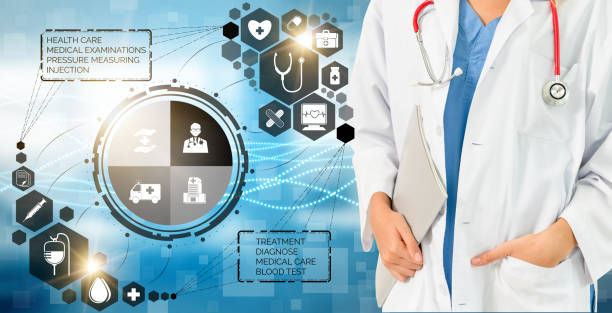Table of Contents
The healthcare sector is embracing innovative solutions to improve patient interaction and practice efficiency, redefining the delivery and experience of care.
1. The Digital Front Door: Enhancing Patient Access and Engagement
The digital front door in healthcare is revolutionizing patient engagement and access. It offers 24/7 access to appointments, medical records, and virtual consultations, improving patient retention and satisfaction. Digital platforms provide personalized health content, reminders, and self-management tools. Integrating with EHR systems ensures seamless information flow, leading to more efficient diagnosis and treatment.
2. Artificial Intelligence: Revolutionizing Diagnosis and Treatment Planning
Artificial Intelligence (AI) is revolutionizing medical care by analyzing vast data from medical images, genomic sequences, and patient records. AI tools can detect diseases like cancer, diabetes, and neurological disorders early, improving prognosis and survival rates. They can also suggest personalized treatment plans based on individual patient characteristics and predict therapy responses. AI-powered virtual assistants support clinical decision-making, providing evidence-based recommendations and flagging potential drug interactions. This integration enhances medical care accuracy, efficiency, and patient interaction, enriching the overall care experience.
3. Telemedicine: Bridging the Gap in Healthcare Delivery
Telemedicine has emerged as a critical tool in bridging the gap in healthcare delivery, especially in underserved and remote areas. The COVID-19 pandemic accelerated the adoption of telehealth services, demonstrating its potential to provide continuous care while minimizing the risk of infection. Through secure video conferencing platforms, patients can consult with their healthcare providers from the comfort of their homes, reducing the need for travel and wait times. Telemedicine is particularly beneficial for managing chronic diseases, mental health conditions, and follow-up consultations. It also enables better resource allocation by reducing the burden on emergency departments and outpatient clinics. Furthermore, telemedicine platforms can integrate with wearable devices and remote monitoring tools to track vital signs, medication adherence, and other health metrics in real-time. This continuous monitoring allows for timely interventions and empowers patients to take an active role in their health management. As telemedicine technology continues to advance, it promises to enhance accessibility, affordability, and quality of care across the healthcare spectrum.
4. Patient Portals and Health Records: Streamlining Communication and Care Coordination
Patient portals and Electronic Health Records (EHR) systems are vital in streamlining communication and care coordination between patients and healthcare providers. EHRs offer a unified, comprehensive digital record that includes medical history, lab results, imaging studies, and treatment plans accessible in real-time. Patient portals, on the other hand, empower patients by granting them access to their health information, the ability to schedule appointments, request prescription refills, and directly communicate with their care teams. These platforms significantly reduce administrative workload by automating many routine tasks, thereby improving practice efficiency. Enhanced data sharing and interoperability features ensure that critical information is readily available to all members of a patient’s care team, facilitating better-informed clinical decisions. Moreover, the utilization of patient portals can enhance patient engagement and compliance, as individuals are more likely to follow through with treatments and lifestyle changes when they can actively participate in their care. The integration of these systems exemplifies the move towards a more connected, efficient, and patient-centric healthcare environment.
5. Robotics and Automated Systems: Elevating Surgical Precision and Operational Efficiencies
The integration of robotics and automated systems in healthcare is elevating surgical precision and operational efficiencies to new heights. Robotic-assisted surgeries, for instance, provide surgeons with enhanced dexterity, control, and visualization, allowing for minimally invasive procedures with smaller incisions, less blood loss, and quicker recovery times for patients. These robotic systems can operate with a level of precision that surpasses human capabilities, reducing the risk of complications and improving surgical outcomes. Additionally, automated systems are being deployed in various administrative and logistical functions within healthcare facilities, such as appointment scheduling, billing, inventory management, and even medication dispensing. By automating these routine tasks, healthcare providers can allocate more time towards direct patient care and reduce the likelihood of human error. Robotics and automation also play a critical role in laboratory settings, where they can handle high-throughput testing with consistent accuracy and speed. The continuous advancement in robotics and automated systems holds immense potential for driving efficiency, accuracy, and quality in both clinical and operational aspects of healthcare, ultimately leading to better patient outcomes and a more streamlined healthcare delivery system.

